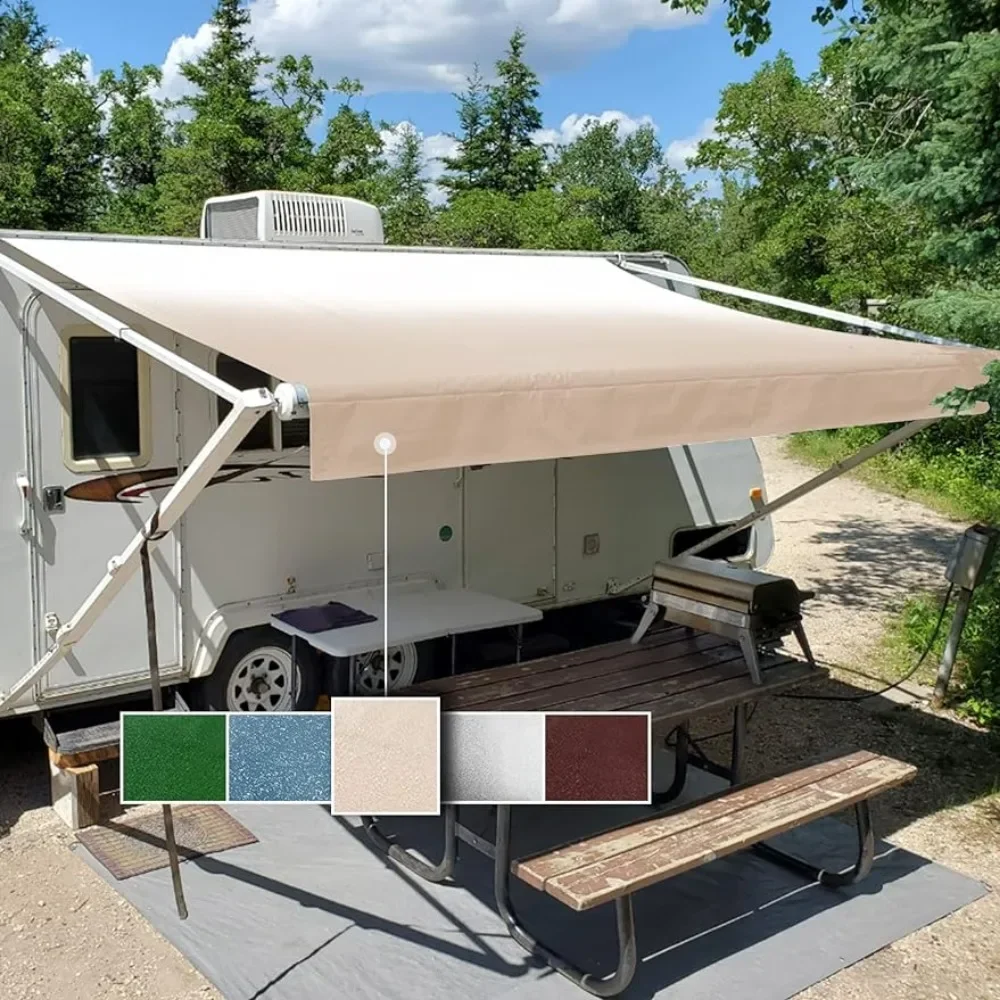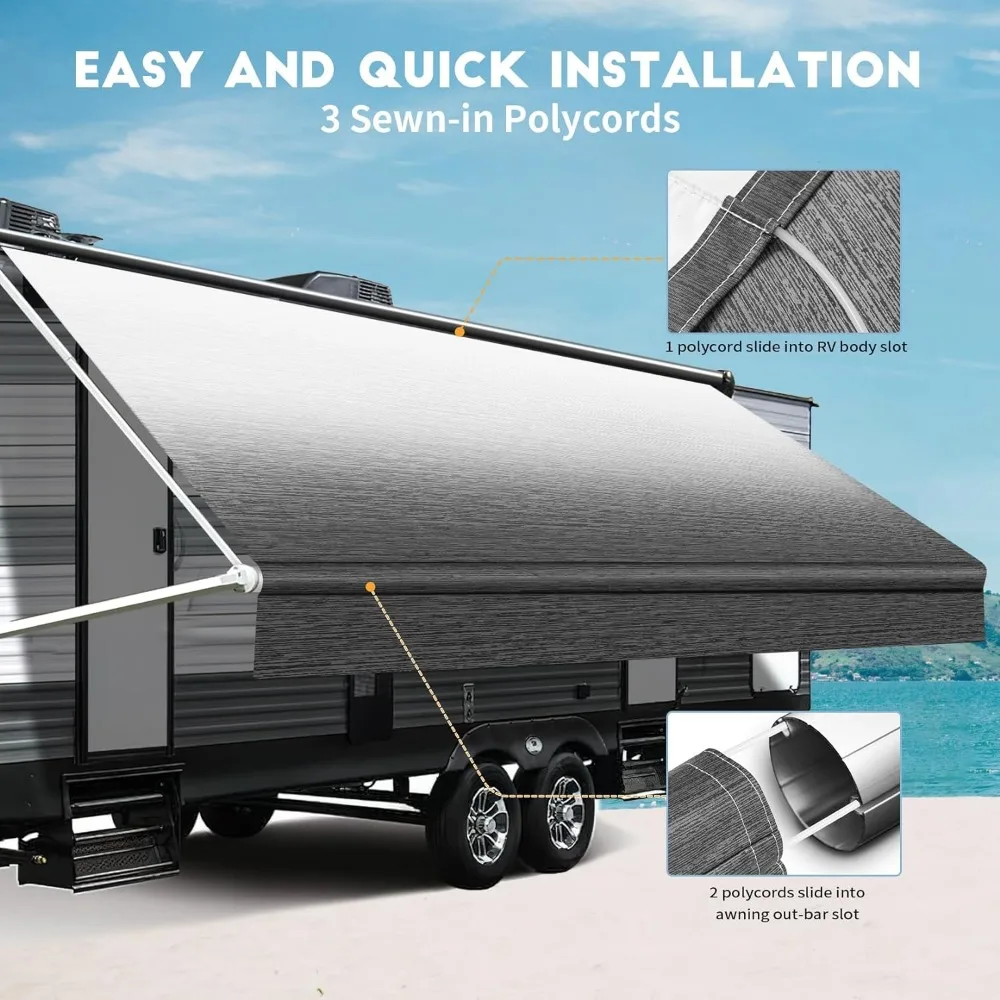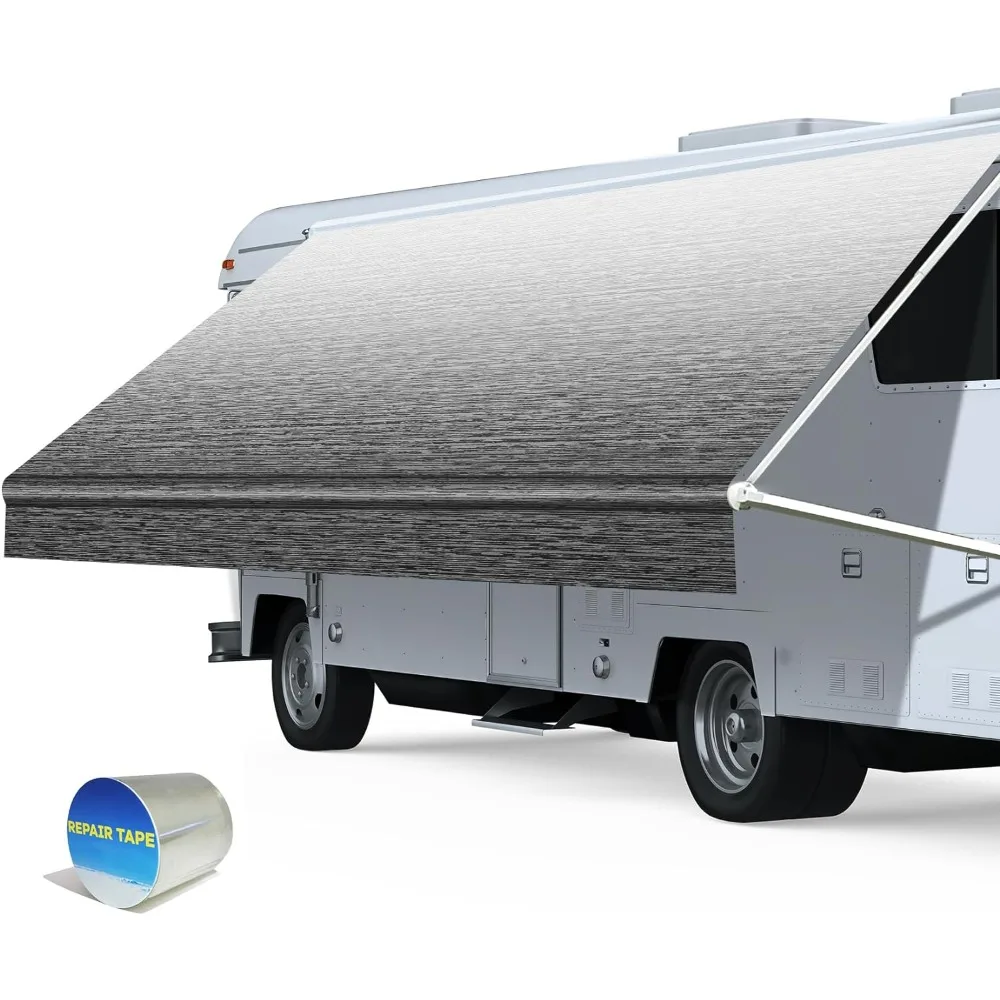Introduction: Revitalizing Your RV’s Outdoor Oasis
Your RV awning serves as a vital extension of your living space, providing shade and comfort during your outdoor adventures. Over time, exposure to the elements can cause wear and tear, leading to faded or damaged fabric. Replacing the awning fabric not only rejuvenates your RV’s appearance but also ensures continued protection from sun and rain. This comprehensive DIY guide walks you through the process, empowering you with the knowledge and steps necessary for a successful replacement.
Assessing the Need for Replacement
Before diving into the project, it’s crucial to determine whether a replacement is indeed necessary. Inspect the fabric for tears, holes, mold, or extensive fading. If repairs are minor, patching might suffice. However, widespread damage or significant wear indicates it’s time for a fresh start.

Choosing the Right Fabric
Selecting the appropriate replacement fabric is key to achieving a long-lasting and visually appealing result. Look for materials designed specifically for RV awnings, which are typically made of durable, weather-resistant polyester or acrylic. Factors to consider include UV resistance, water repellency, and colorfastness. Additionally, ensure the new fabric matches the dimensions of your existing awning.
Gathering Tools and Materials
To execute the replacement smoothly, gather the following tools and materials:
- New awning fabric
- Measuring tape
- Screwdrivers (both flathead and Phillips)
- Socket set or wrench
- Ladder
- Helper (optional but recommended)
- Cleaning supplies (soap, water, soft brush)
-Awning rail lubricant - Seam sealant (if applicable)
Preparing for Installation
Cleaning and Disassembly
Begin by thoroughly cleaning the awning frame and roller tube. This step is vital to prevent dirt and debris from damaging the new fabric during installation. Next, disconnect the awning from the RV, typically involving unscrewing or unclipping brackets, depending on your RV model.
Removing Old Fabric
With the awning fully extended, carefully detach the old fabric from the roller tube, usually secured with spring-loaded metal clips or screws. Slide the fabric out from the awning rail, taking note of how it was positioned for reassembly guidance.
Installing the New Fabric
Preparing the New Fabric
Lay out the new fabric on a clean surface, ensuring it’s free of wrinkles. Measure and mark the positions where the fabric needs to attach to the roller tube, matching the old fabric’s pattern if possible. Apply seam sealant to缝合处 or edges as per the manufacturer’s instructions to enhance water resistance.
Attaching to the Roller Tube
Working systematically, slide the fabric onto the roller tube, aligning it correctly. Secure it in place using the provided hardware, replicating the original setup. This might involve screwing or clipping, depending on your awning’s design.
Installing Back onto the RV
With the help of a ladder and possibly a second person, carefully lift the awning assembly back onto the RV, reconnecting brackets and securing screws tightly. Ensure everything is properly aligned and snug to prevent future leaks or instability.

Fine-Tuning and Finishing Touches
Adjusting Tension and Alignment
Using the adjustment mechanism on your awning, fine-tune the tension to ensure the fabric rolls up evenly and securely. This may involve a crank handle or a motor, depending on your setup.
Lubricating the Awning Rail
Apply a silicone-based lubricant to the awning rail to facilitate smooth operation and prevent fabric wear during opening and closing.
Testing and Final Inspection
Before hitting the road, fully extend and retract the awning several times to test its functionality. Inspect for any signs of misalignment, fabric catching, or other issues that need addressing.
Maintenance Tips for Longevity
To prolong the life of your new awning fabric, follow these maintenance tips:
- Regularly clean the fabric with mild soap and water.
- Keep trees and overhanging branches trimmed to avoid scratches.
- During periods of non-use, store the awning to protect it from harsh weather.
- Check for signs of wear and address minor damages promptly to prevent escalation.
Enhancing Your RV Awnings: Additional Customization & Upgrade Ideas
Personalizing Your Outdoor Haven
Beyond a simple fabric replacement, there are numerous ways to customize and upgrade your RV awning, transforming it into a personalized and functional outdoor living area. These enhancements not only elevate your camping experience but also increase the usability and enjoyment of your RV’s exterior space.
LED Lighting Integration
Integrating LED strip lights or pendant lighting under your awning creates a warm, inviting atmosphere for evening gatherings. These energy-efficient lights can be solar-powered or connected to your RV’s electrical system, providing illumination without draining your battery excessively.
Motorized Awning Upgrade
Upgrade to a motorized awning system for effortless operation at the push of a button. This addition is particularly valuable for solo travelers or those with mobility limitations, eliminating the need for manual cranking.
Weatherproofing Enhancements
Consider adding weatherproofing accessories like wind sensors or tie-down kits to secure your awning during gusty conditions. These devices automatically retract the awning when winds reach unsafe speeds, preventing damage.
Privacy Screen and Sun Shades
Install retractable privacy screens or sun shades to the sides of your awning, creating a private and shaded oasis. These accessories not only block harsh sunlight but also provide additional privacy from neighboring campers.
Awning Accessories for Added Comfort
To maximize comfort, invest in awning-mounted accessories like retractable awning-side tents, which can double as extra sleeping quarters or storage space. Add portable furniture, outdoor rugs, and a portable camping kitchen to complete your outdoor living room.
Creative Fabric Patterns and Colors
While replacing your awning fabric, consider opting for vibrant colors or unique patterns to reflect your personal style. Custom fabrics can make your RV stand out in a crowd and create a visually pleasing environment.

Innovative Shelter Solutions: Advanced Awnings and Technologies
Innovative Awning Designs
As technology advances, so do the designs and functionalities of RV awnings. Some of the latest innovations include:
- Smart Awnings with WiFi Connectivity: Control your awning remotely via smartphone apps, allowing you to extend or retract it from inside your RV or even when you’re away, ensuring your RV is always prepared for changing weather.
- Automated Weather Responsive Systems: Advanced sensors not only detect wind speed but also humidity and precipitation, automatically adjusting the awning position or retracting it to protect against unexpected storms.
- Flexible Solar Panel Awnings: Integrating flexible solar panels into the awning fabric turns it into a power-generating source, enhancing energy independence and reducing reliance on campsite hookups.
- Expandable and Modular Awnings: These systems allow for easy extension of your awning coverage, connecting multiple sections to create a larger shaded area perfect for group gatherings or outdoor events.
- Inflatable Awnings: Using air instead of traditional frames, inflatable awnings offer quick setup and enhanced stability, making them ideal for off-grid camping or areas with uneven terrain.
Incorporating Technology for Enhanced Living Experience
- Integrated Audio Systems: Pair your awning upgrade with Bluetooth-enabled outdoor speakers, seamlessly blending music into your camping ambiance without the hassle of wires or extra setup.
- Outdoor Movie Screens: Transform your awning into an outdoor cinema by attaching a retractable movie screen, creating a unique entertainment hub for family nights or social gatherings.
- Smart Climate Control: Integrate thermal management systems like misting fans or heating elements into your awning setup, regulating the temperature beneath it for comfortable outdoor living regardless of the weather.
-
Eco-Friendly Materials: Choose awning fabrics made from recycled materials or those designed for optimal UV resistance and reduced heat absorption, promoting sustainability while enhancing comfort.
Conclusion: Enjoy Your Revitalized RV Experience
Replacing your RV awning fabric not only revives its aesthetic appeal but also ensures your outdoor living space remains comfortable and protected. By following this detailed DIY guide, you’ve not only saved on professional installation costs but also gained a sense of accomplishment. Now, sit back, relax, and enjoy countless fresh outdoor experiences under your newly refreshed RV awning.
